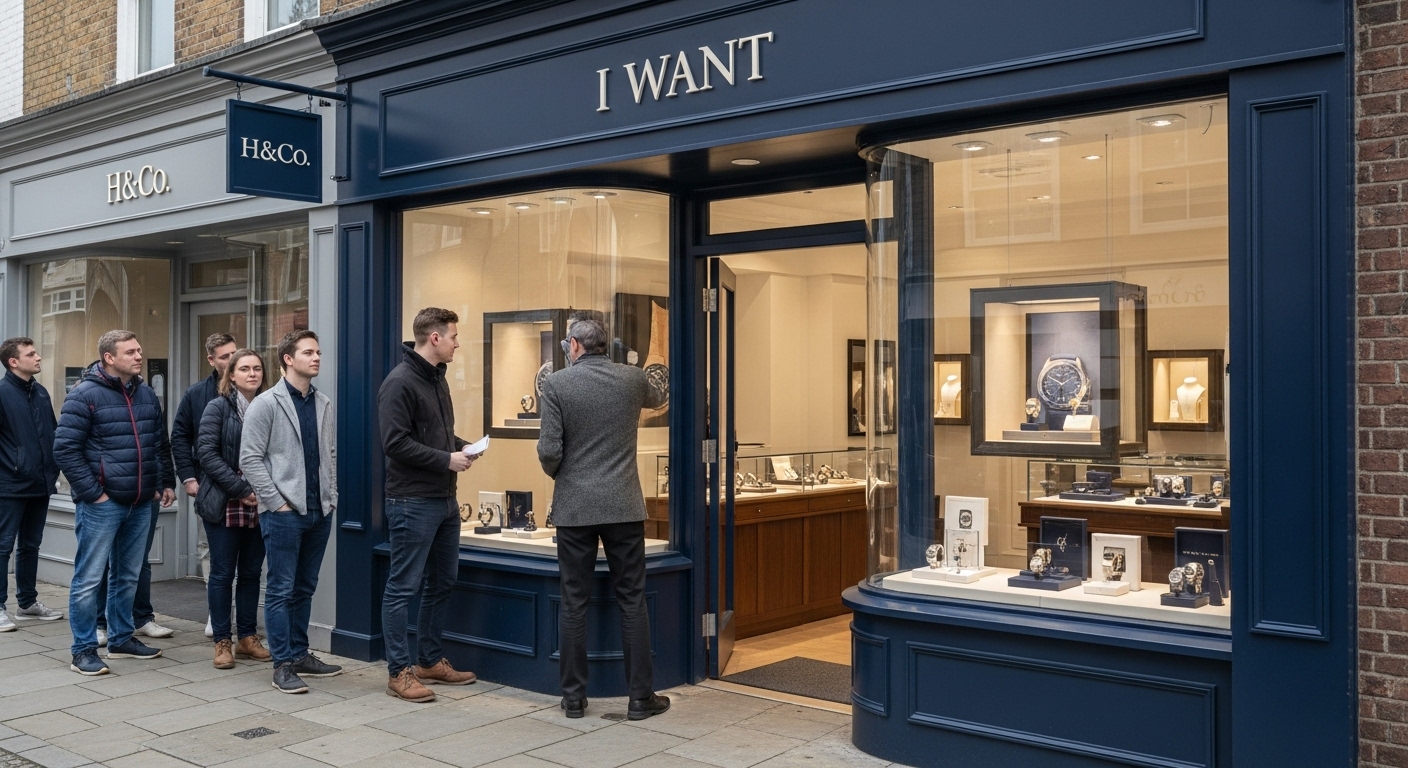Effective Marketing Techniques for Jewelry Wholesalers: Strategies to Boost Your Business
If you’re a jewelry wholesaler, you already know how fierce the competition can be. Sourcing quality pieces is just the start—you need to find ways to stand out and keep retailers coming back for more. In today’s crowded marketplace, simply having great products isn’t enough. To truly succeed, you need a smart, well-rounded marketing strategy that blends digital tactics with personal interactions.
In this article, we’ll explore effective marketing techniques designed to help you grow your client base and build lasting relationships that lead to repeat sales. From implementing a CRM system to leveraging paid advertising, trade shows, and content marketing, these strategies will equip you to boost your business and strengthen your brand. Ready to take your wholesale business to the next level? Let’s dive in.
Implementing a CRM System to Strengthen B2B Relationships
Managing a growing client base is no easy task, especially in the competitive world of jewelry wholesaling. That’s where a CRM (Customer Relationship Management) system comes in. For wholesalers, a CRM is more than just a digital tool; it’s a strategic asset designed to build long-term partnerships and encourage repeat business.
A well-implemented CRM centralizes your clients’ purchasing histories, preferences, and order trends, enabling you to segment your customers effectively. This allows you to craft personalized outreach, such as recommending products based on past purchases or offering custom discounts, helping to keep clients engaged and boost repeat orders.
Beyond personalized communications, a CRM also allows you to track orders and collect customer feedback, offering valuable insights into product performance and customer satisfaction. These insights can help refine your sales strategy, allowing you to prioritize follow-ups with key clients and identify top-selling products.
Another key feature is the ability to make smart inventory suggestions based on previous orders or trends in the market. Adding detailed notes—such as your clients’ customer demographics or preferred styles—enables you to make more informed recommendations that align with their needs. This level of insight can transform the way you engage with retailers, solidifying your relationships and making your business indispensable to them.
It’s important to remember that the specific CRM platform is secondary. Whether you’re using Excel, QuickBooks, or a more sophisticated CRM tool, the key is having a reliable system in place to organize and manage your client relationships. As long as you can segment your customers and learn from their buying behavior, you’re on the path to success.
Over time, a robust CRM system will not only help you stay organized but also deepen your connections with retail partners, turning one-time buyers into loyal, long-term partners.
Using Paid Advertising to Reach New and Existing Clients
Paid advertising is a powerful way for jewelry wholesalers to connect with both new customers—those who have never worked with you—and existing clients who already buy from you. Whether you’re aiming to expand your reach or strengthen relationships with your current retail partners, paid ads allow you to engage with your target audience more effectively.
One of the key advantages of paid advertising is its ability to reach highly specific audiences. Platforms like LinkedIn, Facebook, and Instagram offer robust targeting options to help you reach the decision-makers at jewelry retail stores. For larger, well-established retailers, LinkedIn ads are a smart choice. You can target specific companies, industries, or decision-makers, ensuring that your message reaches those in positions to make purchasing decisions.
On platforms like Facebook and Instagram, you can take advantage of programmatic ads and retargeting. Programmatic ads let you automate ad buying and target jewelry retailers based on their behavior, interests, and engagement with your previous content. Retargeting, in particular, allows you to show ads to those who have interacted with your brand before—making it a valuable tool for re-engaging existing clients with promotions or new product launches.
Another effective strategy is using geo-targeted ads during industry events like trade shows (e.g., JCK). These ads ensure that your message is seen by retailers attending these events, increasing interest in your products when buyers are actively seeking new suppliers.
Beyond attracting new clients, paid ads are also essential for re-engaging your current customers. By targeting existing retailers with ads for new collections, exclusive promotions, or seasonal deals, you stay top-of-mind and encourage repeat purchases. This helps to reinforce your relationships and maintain your brand’s presence.
Lastly, paid advertising is a cost-effective way to test new markets. Before committing to a trade show or other major marketing initiatives, you can use paid ads to gauge interest and see how well your products resonate with potential buyers. This ensures your marketing dollars are spent wisely and in the right direction.
By leveraging LinkedIn, Facebook, Instagram, and programmatic advertising, you can not only grow your client base but also nurture long-term relationships with your retail partners.
Attending Trade Shows and Networking Events
Trade shows are a cornerstone of the jewelry industry, offering wholesalers invaluable opportunities to connect with potential buyers face-to-face. These events allow you to build personal relationships, establish trust, and stand out in a crowded marketplace—all crucial elements for gaining new business.
To make the most of your trade show presence, it’s essential to invest in visually appealing booth designs, branded promotional materials, and exclusive, event-specific offers. By offering special deals or giving attendees a sneak peek at upcoming collections, you create a reason for them to engage more deeply with your business. These personalized interactions help you forge meaningful connections that can lead to long-term partnerships.
However, your efforts shouldn’t stop when the trade show ends. Following up with the contacts you’ve made is critical for maintaining the momentum you’ve built. A combination of personalized email campaigns and CRM-driven follow-ups will ensure that the conversations started at the event continue to develop into lasting business relationships. By staying engaged and nurturing these connections, you can increase your chances of turning initial interest into sustained growth and repeat sales.
Although virtual trade shows have become more common in recent years due to their convenience and cost-effectiveness, jewelry is a product that’s often best appreciated in person. Buyers want to touch, feel, and see the pieces up close to make informed purchasing decisions. While virtual shows can be useful for testing markets and expanding your reach, in-person events still play a vital role in the jewelry industry.
Building a Strong Brand for Long-Term Success
As a jewelry wholesaler, you need to focus on two key types of brands: your company’s brand and the brands of the collections you carry. Building one brand is challenging enough, but managing two distinct types of brands can seem overwhelming. However, with quality products, great service, and a consistent customer experience, it’s entirely achievable.
Building Your Jewelry Brand
The first brand to focus on is how your jewelry is perceived by the end customer—the retailer’s customer. Building a strong brand for your jewelry is essential for long-term success. A well-established brand increases customer affinity for your products, helping you stand out from competitors and offering something truly distinctive beyond commodity-driven goods.
A strong brand identity opens doors by attracting retailers who are eager to carry your products. Building this brand involves creating a reputation for quality, craftsmanship, and reliability—qualities that appeal to both your retail partners and the end consumer. Your brand should embody the values that make your jewelry unique, whether it’s attention to detail, the use of ethical materials, or sustainability credentials like being a certified B Corp.
Leveraging retail partnerships can further elevate your jewelry brand. By placing your products in reputable retail spaces and cultivating strong relationships with your partners, you not only expand your reach but also strengthen your credibility. Retailers act as ambassadors for your brand, reinforcing its presence in the market when they confidently recommend your products.
The easier you make it for your retail partners to sell your products, the more successful both of you will be. By providing them with the right information, compelling visuals, and promotional tools, you help boost their ability to sell, which in turn benefits your brand.
Maximizing Retailer Partnerships
Effectively leveraging your retail partners offers a significant opportunity to grow your brand. Providing them with marketing assets—such as co-branded social media content or advertising materials—can build brand awareness among their customer base, which should align with your target audience.
Offer jewelry stores co-branded images for social media posts or ads, or collaborate on branded email campaigns targeting their customers. Additionally, you could send a brand representative to work with the retail partner, creating content like interviews or product showcases for their social media channels. The options for collaboration are vast, but building a brand starts with one small, intentional step.
Building Your Wholesale Brand
While your jewelry brand is vital, it’s equally important to cultivate a strong wholesale brand. Your wholesale brand shapes how retailers perceive your company and can significantly impact your reputation within the industry. In many markets, jewelry retailers follow each other closely on social media, so when your products appear on a competitor’s feed, other retailers are likely to take notice—potentially sparking interest in your offerings.
To build a successful wholesale brand, it’s essential to consistently offer high-quality, on-trend products that are in demand. Reliability, strong partnerships, and the ability to deliver what retailers need on time are the cornerstones of your wholesale reputation. Additionally, your ability to build a recognizable jewelry brand can significantly enhance your standing as a wholesaler. Retailers may be more inclined to carry your new lines, knowing your reputation for being able to build a brand and demand for your products. These attributes help you stand out as a trusted supplier with whom retailers want to work.
Content marketing is another powerful tool for strengthening your wholesale brand. By providing educational resources—such as blogs, guides, or whitepapers—on relevant topics like sourcing practices, jewelry trends, or industry insights, you offer retailers valuable information that helps them make smarter purchasing decisions. This not only builds trust but also positions your brand as an authority in the wholesale jewelry market.
It’s also crucial that your content addresses the specific needs and challenges of your retail clients. Sharing insights into top-selling or trending products, for example, can help retailers make more informed choices about their inventory. By aligning your content with their business goals, you reinforce your position as a trusted partner invested in their success.
Conclusion
Jewelry wholesalers must adopt a multifaceted marketing strategy to thrive in today’s competitive market. By implementing a CRM system, leveraging paid advertising, attending trade shows, offering educational content, and maintaining a strong online presence, you can position your business for sustained success. However, the true key to standing out lies in building a recognizable brand—one that retailers trust and consumers actively seek out.
The foundation of success is building meaningful connections with retailers by addressing their specific needs. From digital campaigns to face-to-face interactions, every touchpoint should reinforce your brand’s identity and values. By continually refining your approach, you create a brand that resonates with retail partners and their customers alike.
By focusing on building both your jewelry and wholesale brands, you’ll stand out in the crowded marketplace, foster lasting relationships with retailers, and create a loyal customer base that chooses your products time and time again.

